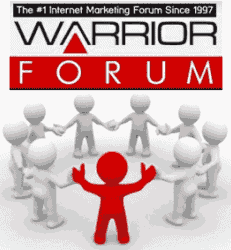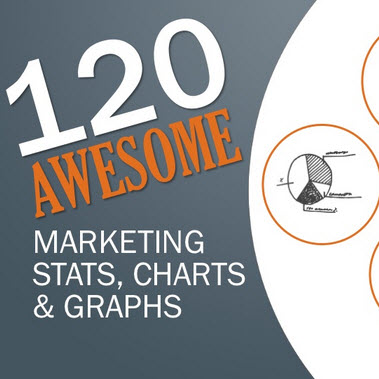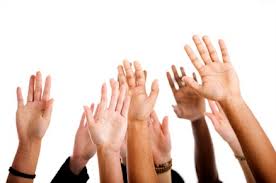Design your own Free Course

When designing your free course, follow these 2 rules:
Rule 1: Give Away Just Enough to Create Desire
The first thing you need to do is decide what bits of information you’re going to give away. You want to give away just enough to entice the reader to purchase your full product. Try to craft your free offer so that it allows you to email the subscriber with free information at least 7 times.
Rule 2: Give it Away Slowly
Second, you must spread out the information over several days. Let’s say you’re selling a book on competitive rock climbing. Your book contains 29 chapters. You decide to give out 7 chapters for free. You DO NOT want to let the subscriber download ALL 7 chapters in one go. Let them sign up to receive one chapter every 2 – 3 days.
By spreading it out this way, you allow yourself more time to form a relationship with the reader. You also make it easier for them to consume the 7 free chapters by spreading them out rather than handing it to them in one go. Remember – you need to contact the subscriber around 7 times on average before generating a sale.
If your free course is a software product, then you can let the subscriber download a limited version of the product (with some features turned off). You should always require subscribers to provide an email address before downloading and you should email them a friendly tip or suggestion every few days. The purpose of the email is to remind them to consume the product and to create a bond with them.
Simply allowing your subscribers to download a software product and then forgetting about them is not a smart thing to do. Create a relationship!
Setting Up the Course
Your free course should start with a welcome email followed by Lesson 1.
Every 2-3 days the subscriber should receive another lesson or nugget of information. We recommend at least 7 lessons in total.
At the end of the 7th lesson, the subscriber should receive a promotional email offering them a reason to buy your product immediately.
What Should Your Lessons Look Like?
There are 2 ways to present the information in your free course. The first is to simply include the entire lesson within the email. The second is to create a short message designed to SELL the reader on reading the full message, which would be in the form of a PDF or on the Web.
Method 1: Include the Entire Lesson within the Email
This is ideal for shorter lessons. Here is an example from Dearl Miller’s free course, Trafficology. We have removed the bulk of the lesson for simplicity and have simply included the header and footer.
Hello John,
Welcome to Part 6 of the 7 Most Powerful Web Traffic Creation & Conversion Techniques Period.
Today you will learn:
Usability is the study of how people use things. Therefore, web usability is the study of how people use the web.
….. Rest of Lesson Follows Here……..
In your next lesson of the 7 Most Powerful <subject here>, you will learn the single most valuable technique available.
If you found this information useful, we would like to hear from you. Please email us: youremail@yourdomain.com
Can’t wait? Ready for Advanced Lessons?
Join our Exclusive Members Only Area: http://yourwebsite.com/members-only
Notice a couple of things about the email lesson above – you can adopt these best practices in your own lessons.
- First, the email starts with the receiver’s first name. This personalization level is important for boosting readership and creating a better bond with the reader. In a moment we’ll show you how this is done.
- Next, the lesson starts with some teaser copy designed to excite the reader and arouse interest. The authors tell the reader what they are going to cover and why it’s important.
- The email is chatty and informal.
- The lesson ends with a small sales pitch that’s not too pushy – the simple line “Can’t Wait? Ready for Advanced Lessons?” followed by a link to the private membership site.
Method 2: Use a ‘Teaser’ and Keep the Lesson Separate
This method is good if your lesson is too long and cannot be properly read in an email. Longer lessons that require images, use of fonts, or multimedia elements like audio and video are better served up on the web.
Here is an example of a ‘teaser’ style email:
Hi Eric,
Welcome to the Most Important Lesson of My Online Training Program!
Imagine if you could re-program your mind – just like a computer – to get rid of bad habits or unwanted behavior. Imagine how much more successful and in control of your life you would be.
What if I told you that everyone has this ability but only a few of us learn to use it!
In this lesson, I’m going to teach you one of the most versatile and powerful techniques to use the power of visualization to alter your behavior.
The Law of Attraction can help you:
- Kick a habit. Do you want to quit smoking? Or perhaps eat or drink less?
- Overcome a fear. Do you want to overcome your fear of heights? Or maybe a fear of commitment or public speaking?
- Enhance your desire. Do you want to be more motivated to succeed at your chosen career? Or to excel at writing, acting, a sport or a non-profit cause you’re working for?
Since this is such a powerful exercise, I’m going to provide you with audio from the Kit for free so that I can guide you through the exercise.
Click on the Link below to download the audio now:
www.yourwebsite.com/audio
The thing to notice about Method 2 is that it’s fairly salesy. But this is perfectly fine. The goal of the email in Method 2 is to sell the reader on the idea of taking the time to click on a link and read the lesson on the web.
Which Method Should You Use?
The method to use really depends on the style and type of your message. As a rule of thumb, if your lesson is longer than 2 pages, do not put the entire lesson in the email. Create a short teaser and drive the reader to click on a link that opens up the lesson in a new window.
If your lesson is a short tip and does not require graphics or lengthy text, you can include the entire lesson within the body of the email.
Each lesson should provide well-formatted, quality information that will be relevant and of interest to your target audience. If your content does not have any perceived value, your readers may unsubscribe.
Your lessons should identify a problem, discuss possible courses of action, and then solve the problem using your product or service. Remember to use your lessons to teach and inform rather than blatantly push for sales. You can, however, include unobtrusive links to your product pages in the event that a reader does wish to purchase. You don’t miss out on any opportunity to capture a sale.
The final email in your course should be a sales letter about the product or service you offer that is related to the course you just gave. We will discuss how to craft this sales letter in a moment.
A Collection of Sample Free Courses
The following sites are known to have particularly well constructed and high converting free courses. Sign up for their course and learn from their examples.
www.SilvaUltraMindSystem.com – Free course on Meditation
www.e-Filtrate.com – Free course on Email Marketing
www.MindValleyLabs.com – Free course on Ecommerce and Website Conversion Strategies
Crafting the Final Email and Closing the Sale
Once your subscribers have enjoyed your free course, how do you get them to buy your product or service?
The last email in your free course should be a sales letter. It should relate your product or service to the course content and compel customers to buy. This can be done by offering special incentives and pricing, and by including case studies and real customer testimonials.
A good sales letter will:
- Thank the customer for subscribing to the course
- Address the customer’s needs and concerns
- Show how your product or service will satisfy those needs and concerns
- Emphasize the benefits of your product or service (e.g. more time, save money, better health)
- Have actual case studies and/or glowing customer testimonials
- Offer additional incentives in the final call to action
- Reiterate your sales pitch
- Allow customers to complete the purchase by linking to an order page
- Create trust and have a guarantee
- Provide your company contact name, email, phone, and website address for additional support
- Give unsubscribe instructions
The important thing to remember is that the promotional sales letter should NEVER contain the entire sales copy. The sales copy itself should remain on a page on your website.
The sales letter should instead focus on exciting the reader and arousing curiosity to make the reader want to click on a link and visit the actual sales letter.
Why should you never include copy within your final email promotion?
There are 2 reasons for this:
1. If you include sales copy in an email, the email will often get blocked by spam filters.
Even innocent words like ‘guarantee’ or ‘discount’ may be enough to get your letter blacklisted and hurled into a spam folder like an unwanted piece of junkmail (we’ll take a deeper look at spam filters and how to get around them in another tactic).
2. Your readers will likely ignore an email that they perceive to be salesy, or they may save it for later reading (and then never get back to it). You don’t want this to happen.
Here is an example of a sales promotion that works by arousing curiosity and attempting to get the reader to click on a link to see the actual sales copy.
The Backup Sales Letter
What if the reader does not respond to your promo? Don’t worry, you’ll get another chance. Wait 1 – 2 weeks and send another letter to the subscribers who have yet to buy.
In this letter you can offer a free bonus gift.
Summary
Offering your visitors a free sample of your product through an online subscription can easily double your sales. If you do it the smart way that is.
In this tactic we’ve shown you how to use a free online course to create a relationship with your visitors, make them come back to your site over and over again and how to finally close the sale.
Once you’ve designed your free training and created the accompanying emails and promotions, your job is as good as done. Autoresponders will automatically send your course and emails to your subscribers, and sales will start to roll in.
As with every new tactic, testing is key. Test different bonus offers and email formats to see what works best with your subscribers.
Source: The above text was modified for use for SGR affiliates, the original article was forwarded to me from an old Trafficology email. (Unfortunately Trafficology is no longer around, but it was great while it lasted!)




